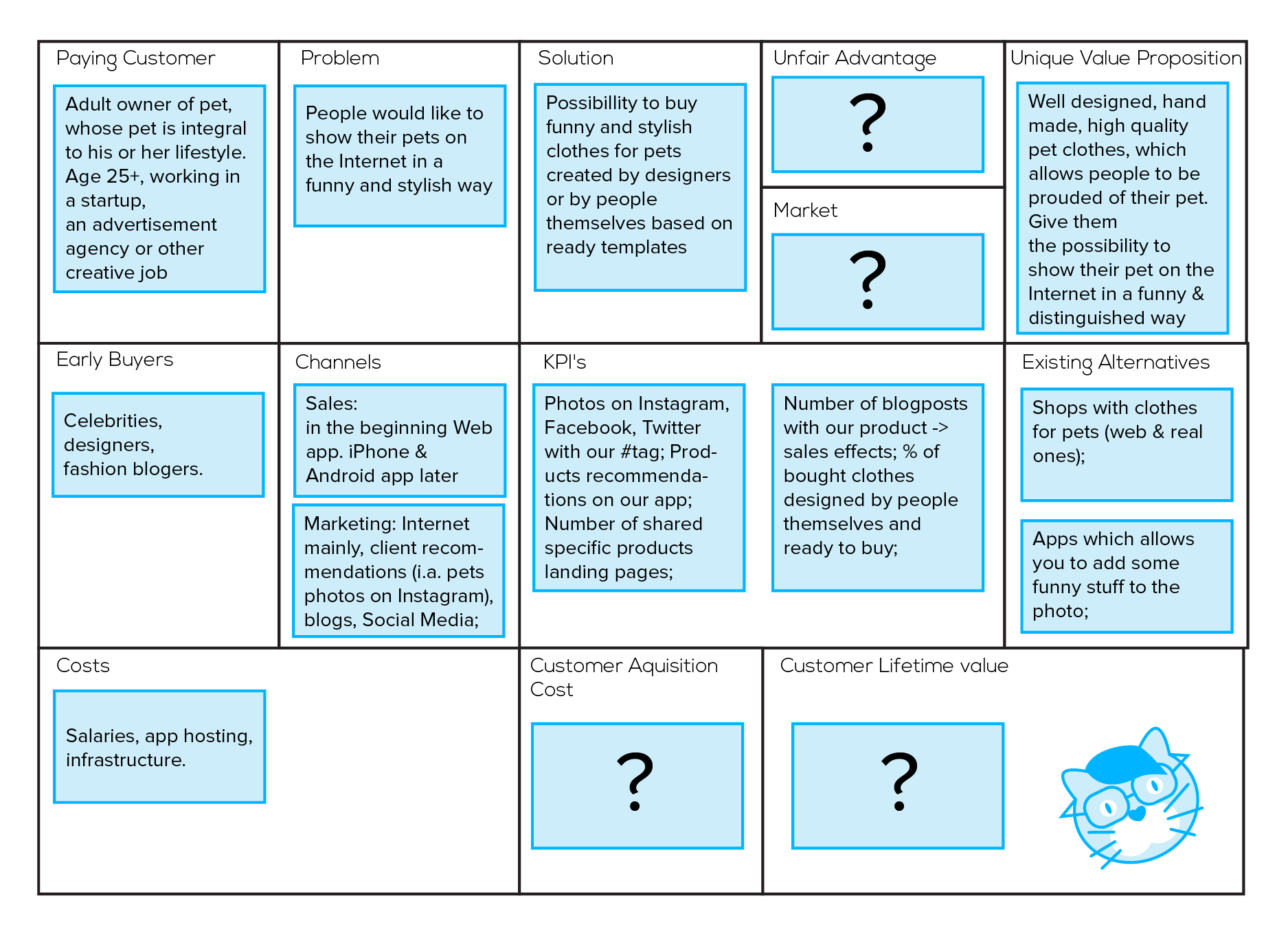3 Canvases to Visualize Business Model. Which one should I choose?
Visualizing your business ideas in easy and simple ways has become much easier as many new solutions are appearing on the wave of Lean Startup’s growing popularity. There are differences between the various tools: themes, form, the level of detail and elements on which they focus attention. Learn to use them properly, you’ll become better at analyzing your ideas and product concepts, and at communicating the most important issues facing your new business.
Canvases are a great alternative to traditional business plans, which usually require a lot of documentation and don’t stress the most important information, reducing the clarity and readability of your business model for potential investors, partners and even employees. And, most importantly, they don’t allow entrepreneurs to work with their business ideas in flexible ways.
Business Model Canvas
The most popular new tool for visualising a business plan is the Business Model Canvas, which visually describes the key elements of a new company, service, or product. It focuses on the value which the business will offer customers, with the Value Proposition placed at the center of the canvas. Key partners and market/customer analysis are also important. It is possible to fill out the canvas using online tools (e.g. via the Strategyzer app or Canvanizer page). A useful supplement to that model is the Value Proposition Canvas, which lets you consider and complete information that is helpful for completing your Business Model Canvas. You should go one to complete the Business Model Canvas if, in your business model, partners and resources are important. In the other canvas models, those parts are less prominent.

Lean Canvas
Less popular, but appreciated for its simplicity, is the Lean Canvas. This canvas is focused on users’ problems, which your product or service will solve and the concrete solutions offered. Lean Canvas has two parts: product and market. In contrast to the BMC, it assumes that the value offered to users will be unique, competitive and new. This canvas also adds a very important component: Key Metrics. These are the numbers you will track which will help you to recognize your product’s success. Competitive advantage is the most significant characteristic of the Lean Canvas; In the canvas it’s described as “Unfair Advantage” which explains the product’s competitive advantage (i.e. it is hard to copy or buy). You should choose the LC model if you’re focusing on users’ problems, solutions and measuring the progress of your business.

Petri Model Canvas
Personally, I usually use either Lean Canvas or Petri’s canvas (FTE canvas), which is its extension. The FTE canvas model places more focus on customers with additional information about the ones that should be paid users. The flow of canvas creation is defined strictly and starts from a “Paid Users” prospective.
Unique to the FTE canvas is the distinction of users who buy your product on an early stage (Early Buyers). This group is often forgotten during a discussion about people who founded their own business. Co-founders are focused on target groups of the ready product, forgetting the natural distribution curve or the product life curve. They forget often that the product needs to first be adopted by users called by Rogers “innovators”, whose characteristics are usually different than those on the mass market. Or, conversely, they treat early adopters as the target group. Forgetting that early buyers are just a small part of all potential clients and achieving market success is connected with reaching a larger number of customers. The Rogers Adoption Curve shows it in a great way, and the FTE canvas distinguishes those groups clearly, too.
This canvas stresses the value of competitor analysis. The Existing Alternatives position focuses the attention of entrepreneurs not only at direct, active competitors, but also the other products and services which already solve the same users’ needs. Startups often forgot about competitors, which is a point often stressed by investors. There is a special canvas dedicated to competition analysis in a lean way.
The important element, which differentiates FTE canvas from Lean Canvas and Business Model Canvas, is the canvas down line, usually responsible for the financial side of the business. Whereas, in the preceding models, the last line included Cost Structure and Revenue Stream, while in the FTE canvas there are: Costs, Customer Acquisition Cost and Customer Lifetime Value (called also LTV or CLV).
As you can see, the structure of the FTE canvas is much more practical and measurable. It allows easy and efficient verification of the business hypothesis. You should choose it if monetisation and the financial side of your business is key for your business (so almost always?).

You need to remember that canvases are only a map of the issues that every startup should consider. There is value in experimenting with these models, because there is no canvas which is always the best – no matter the product or context. You can use more than one canvas in the very beginning; it forces you to look at a product from different perspectives. You can also change a canvas while working with a product (for example from LC to FTE, if, at first, you are working on a global conception and then you’d like to focus more on the financial side). But I don’t recommend completing and actualising a couple of canvases at the same time, because it won’t give you any additional benefits and will take up your time, which should be invested in developing the product. Regardless of which canvas you choose, the key is: if you can’t fill out any canvas in a logical way, you should rethink your business model or even just think again, deeply, about its formula.
